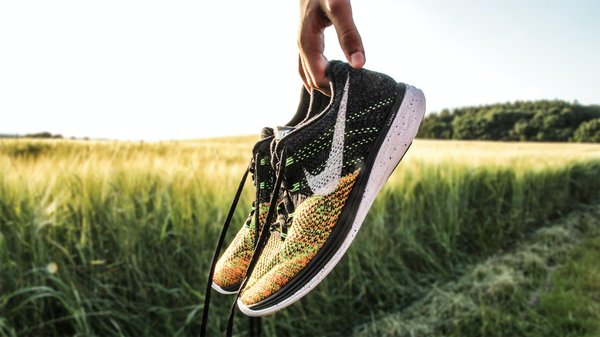Warmer weather and longer days are just around the corner. A spring surge in athletic activities naturally will follow, as people head outside to enjoy a run, hike or pickup sports.
Yet, many people will fail to wear the properly fitting shoes.
- MORE HEALTH
- Philly nearly doubles weekly COVID-19 vaccinations thanks to FEMA clinic
- A single head injury can increase the risk of dementia, Penn study finds
- Pfizer's COVID-19 shot protects against the Brazilian variant, study finds
Only 28% to 37% of people wear shoes of the proper width and length, according to a 2018 study published in the Journal of Foot and Ankle Research.
Not wearing the right athletic shoe can lead to blisters, Achilles tendinitis, plantar fasciitis and hip, knee and back pain, orthopedic surgeons warn.
Achilles tendinitis is a common overuse injury among runners caused by "a repetitive or intense strain on the Achilles tendon, the band of tissue that connects your calf muscle to your heel bone," according to the Mayo Clinic. Plantar fasciitis is a condition in which the plantar fascia, the band of tissue at the bottom of the foot, becomes inflamed and painful.
Stress fractures also have been linked to sneakers with little built-in support.
To help people avoid these injuries this spring, the American Academy of Orthopaedic Surgeons has released some important tips to follow when buying new athletic shoes.
Finding the perfect fit
When shopping for a new athletic shoe, musculoskeletal specialists recommend:
• If possible, shop at a store that caters to your particular sport. If that is not possible, research the most appropriate footgear for that activity.
• When trying on shoes, wear the same type of sock you plan on wearing while participating in the sport. This will help ensure a better fit.
• Pay special attention to the heel counter, the back of the shoe that holds the heel in place, and the front area of the shoe, called the toe box. The shoe should adequately grip your heels, but there should be enough room in the front to wiggle your toes — at least one-half inch space between your longest toe and the tip of the shoes.
• Walk around the store with the shoes on before buying them. Try to test out different surfaces like carpeting and tile to make sure the shoes aren't too loose and won't pinch your toes.
• Don't buy shoes that have been sitting on the shelf for a long time. Even without use, the materials of the athletic shoe can degrade over time.
"When selecting a pair of athletic shoes, wait until the end of the day to try on shoes," orthopedic foot and ankle surgeon Lew C. Schon added. "This is helpful because your feet swell throughout the day. This will ensure you better gage the right fit. Also try on both the left and right shoes and tie the laces to ensure they both fit correctly."
Different features for each sport
Another common problem is that many people don't realize that different types of activities — everything from running to hiking to evening walks around the neighborhood — require a specific type of shoe, according to the American Academy of Orthopaedic Surgeons.
"When it comes to athletic shoes, there's more than meets the eye," Schon said. "Running shoes, court shoes, cleats and hiking shoes all have different features. If you plan on being active pursuing many different exercises throughout the week, a cross-training shoe may be the best choice."
Running shoes are generally grouped into three categories based on the arch of your foot and the area along the bottom of the foot between the ball and heel. Runners with high arches need cushioned or neutral running shoes. Runners with arches that may easily collapse need a running shoe with stability. Those with flat feet or a heavier body weight need a running shoe designed for motion control.
For best the result, have your feet evaluated by a professional, experts advise. Avoid buying cross trainers if you plan on running more than four to five miles a day.
Runners who plan to frequently run off road should purchase trail shoes, which provide added stability.
Walkers need shoes that provide stability in the arch, shock absorption and a smooth tread. Walkers particularly should make sure the counter is stable.
Hiking and court sports, such as basketball, also require specific shoes that provide more stability and offer good shock absorption. Cleats are best for sports such as soccer, lacrosse, football and baseball. The spikes, made of steel or hard plastic, improve traction on grass or soft turf.


